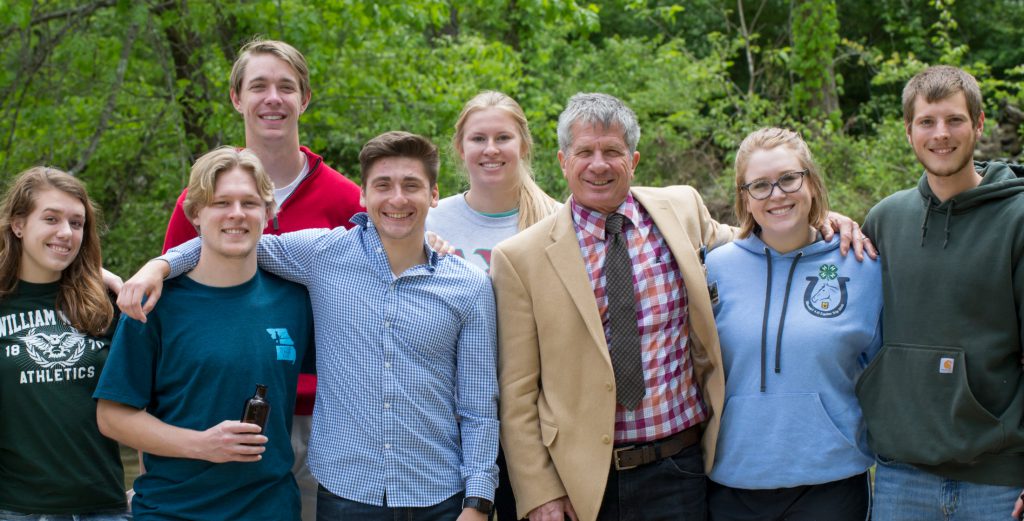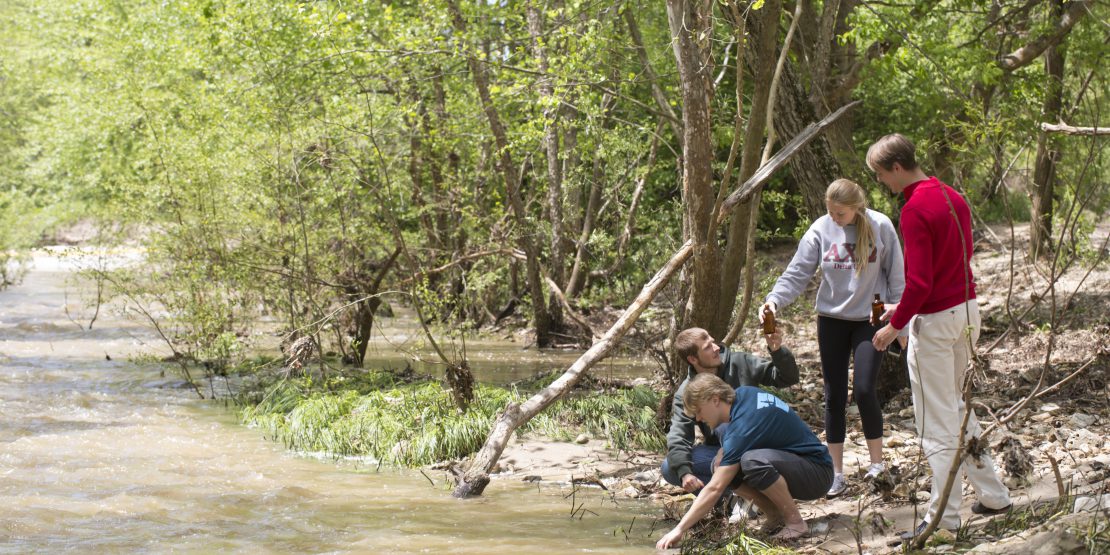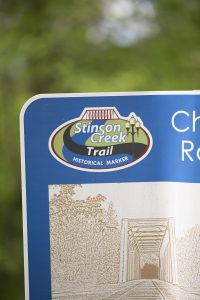 Students and faculty at William Woods University have turned to science to help protect Stinson Creek. Located just minutes from campus, Stinson Creek runs through the city of Fulton and is accompanied by numerous trails.
Students and faculty at William Woods University have turned to science to help protect Stinson Creek. Located just minutes from campus, Stinson Creek runs through the city of Fulton and is accompanied by numerous trails.
“The creek is a local landmark that is very important to Fulton and its residents, and we want to help care for it,” says Dr. Kimberly Keller, Assistant Professor of Biology. “It’s important for universities to give back to the community, and, as a biologist, caring for the environment is crucial.”
But the creek is at risk. It has low oxygen levels, which means there is some type of pollution. The goal is now to figure out what that pollutant is and from where it’s coming.
Researching a Solution
To help preserve the local landmark, students and professors in the William Woods science department have turned to research, creating research opportunities for students to examine the creek.
“We wanted to figure out what organics were in the creek, where these organics were coming from, and how they affected biological populations,” says Phil Kulpinski, a current senior studying Biology with a Pre-Med concentration.
Drew Olson, a senior at the time the project began, was the first student to join the study. He is now getting his master’s in Biology. Preston Wolfe, a graduate of the class of 2017, spent a semester fixing the university’s gas chromatography mass spectrometry machine (GC-MS), a tool that’s been instrumental in their analysis of the creek’s water.
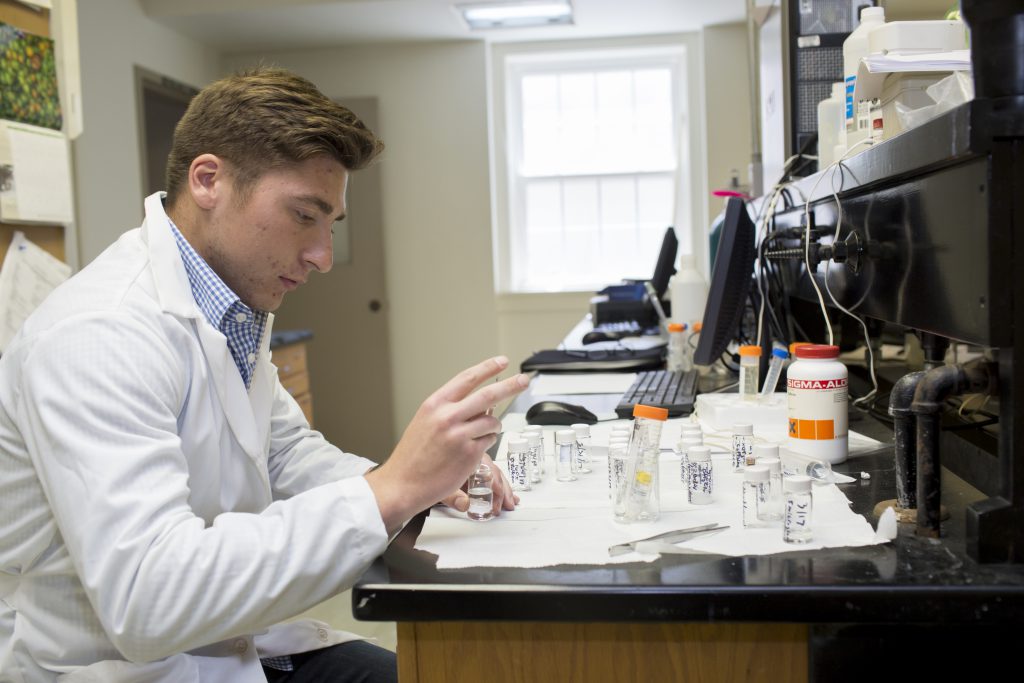
Kulpinski joined him the following semester and has worked on this project for over a year. During the academic year, he spends 10–15 hours a week in the lab analyzing results, and even made the time to come to campus to run tests in between hours at his summer job in town.
“Doing this research has definitely opened my eyes to the different analytical techniques used in chemistry,” he says of the experience. “This opportunity has shown me how to be more detail-oriented in setting goals, analyzing data, using the correct techniques, and reading through the literature.”
Real World Impact
That attention to detail is important, as the team’s findings will have significant real-world impact. The local water treatment facility, already paying for a mandatory $10 million update, faces a potential additional $5 million update if it’s determined their discharge chute is polluting the water.
Currently, it’s unclear if the water treatment facility is even the cause of the pollution, or if the water is already impaired before it ever reaches the discharge chute. This research will help determine the true source of the pollution and guide the city in its decisions.
The team has the full support of the community in their efforts, including the City of Fulton’s Chief Engineer, Wastewater Treatment Plant Manager, Fulton Stream Team, USGS Columbia Environmental Research Center, and the consulting team the City of Fulton hired.
Finding the Right Methods
As their research will have such a significant impact on the local community and businesses, the William Woods students are taking extra care to guarantee that they’re following the right research practices.
Part of this includes looking at recommended research methods from the US Geological Survey, a branch of the government that completes water quality observation. Students examined each of the organization’s various analytical techniques to find the one that best fit their research needs.
“The research involved in this project crosses multiple scientific disciplines, from chemistry to microbiology to ecology,” says Dr. Keller.
Hands-on Experience
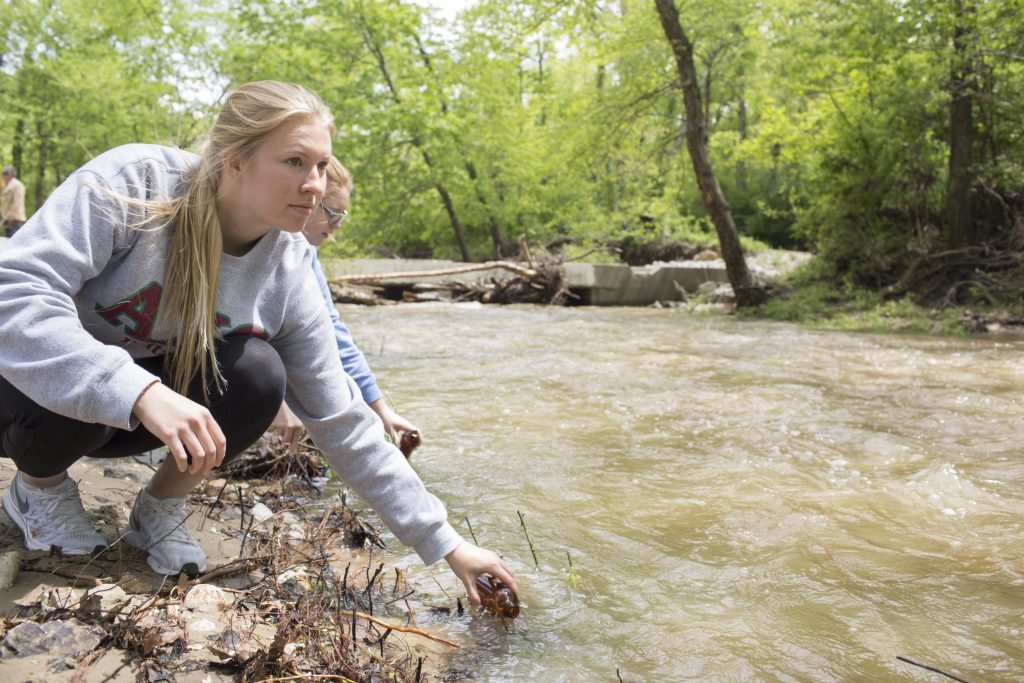
“I am so glad I was able to contribute to this project,” says sophomore Lauren Brown, another Biology major participating in the study. “It has helped me academically and professionally because we had to communicate and count on one another to coordinate the collection and analysis of the samples.”
This type of research is not unusual for William Woods University, which offers research opportunities for all majors. These types of projects allow students to apply their classroom teachings to the real world, giving them the chance to gain experience, boost their resumes, and discover new interests.
“One of my favorite things about this project is just getting the research experience, because it’s something that I’m passionate about,” Kulpinski says.
“In our science classes here at William Woods, we try to model research experiences as much as possible,” says Professor Keller. “But there is nothing that can substitute for the actual thing. Getting real hands-on research experience (like working on Stinson Creek) is what sets our program apart from other schools’. And it often sets our students apart when they apply for graduate, medical, or veterinary schools. Nowadays, you need good quality research to get into these programs. These opportunities give our students a much higher caliber of research to add to their resumes and help them in their careers.”
